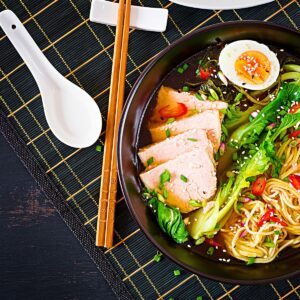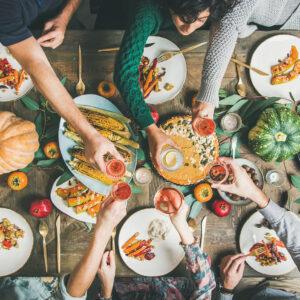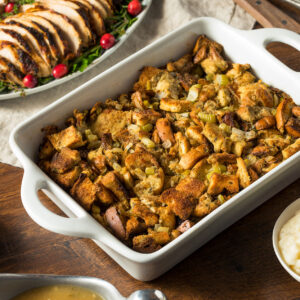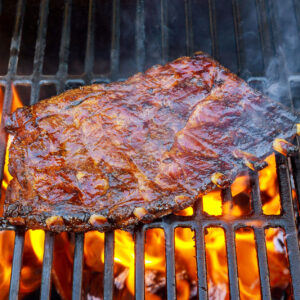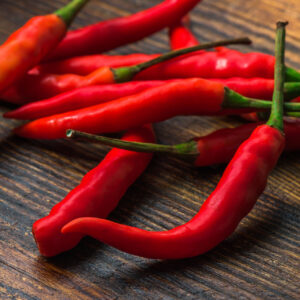The Persian New Year is beloved for its elemental and seasonal nature. As it coincides with the arrival of spring, it serves as a literal marking of a new year, differentiating it from other celebrations that occur in the dead of winter.
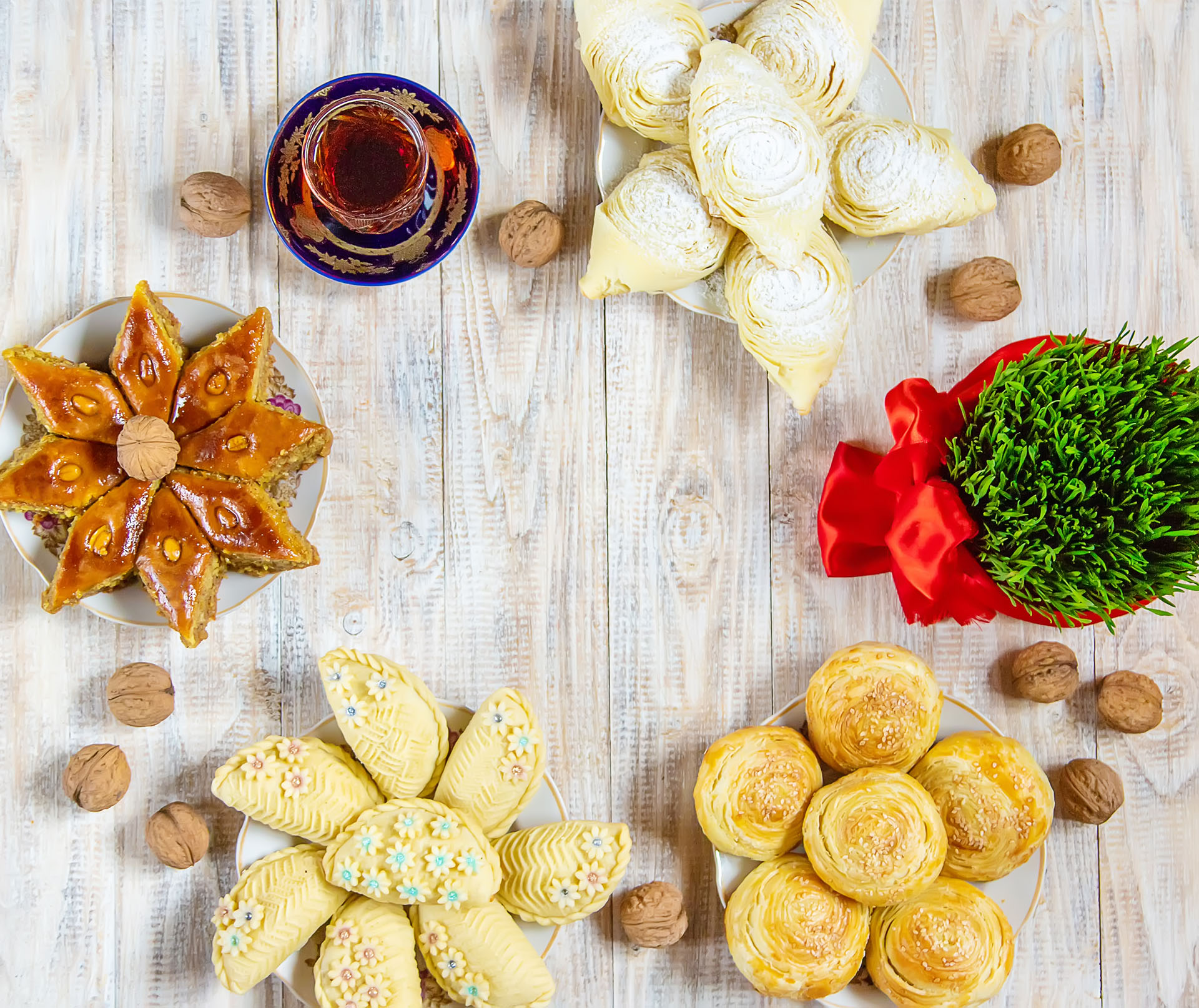
The Persian New Year is a 13-day celebration that occurs during the month of March. This holiday, which is rooted in Zoroastrianism – an ancient religion that predates Christianity and Islam – has been observed in Iran for over 3,000 years. Due to its Zoroastrian origins, it is celebrated worldwide, spanning Central and Western Asia, the Balkans, as well as the United States, and other parts of the world.
According to Persis Karim, the director of the Center for Iranian Diaspora Studies at San Francisco State University, the Persian New Year is beloved for its elemental and seasonal nature. As it coincides with the arrival of spring, it serves as a literal marking of a new year, differentiating it from other celebrations that occur in the dead of winter. The holiday is a warm welcome to the arrival of the new year, characterized by the renewal and vitality of springtime.
What is Nowruz?
Nowruz, also spelled Norooz or Norouz, signifies the first day of spring, marking the commencement of the Persian New Year and the start of the Iranian calendar. Nowruz translates to “new day” and is celebrated as a joyous occasion.
In 2010, the United Nations officially recognized Nowruz as an international holiday, highlighting its cultural significance and global appeal. According to Persis Karim, the celebration of Nowruz is not limited to a specific religious or ethnic group. It is a joyous occasion that transcends various social barriers, uniting individuals from diverse backgrounds in celebration and merriment.
When Is The Persian New Year?
Nowruz is observed on the vernal equinox, which can take place anywhere from March 19 to 21. In California, this year’s Nowruz festivities will begin on Sunday, March 20, at 8:33 a.m.
However, the preparations and celebrations for Nowruz typically start several days ahead of the actual event.
What Year Is It?
1401.
Iran has been using a solar calendar since the 1920s, except for a few years in the 1970s when it reverted to the Islamic lunar calendar. The Iranian calendar is based on the prophet Muhammad’s pilgrimage to Medina and begins with this event. Beeta Baghoolizadeh, an assistant professor of History and Africana Studies at Bucknell University, shared this information.
In 1925, the current solar calendar was adopted by the Iranian parliament.
Common Greetings During Nowruz
There are various ways to extend New Year’s greetings in Iran. The most commonly used phrase is “Saleh No Mobarak,” which translates to “Happy New Year.”
Another way of expressing good wishes is to say “Har roozetan Nowruz,” which means “May every day of your life be a New Year.”
How To Prepare For The New Year?
As winter frost fades away and blossoms start to bloom, Iranians begin preparing for the upcoming new year by getting their homes in order.
This process is known as khooneh takouni, which translates to “shaking the house.”
In practice, it entails a thorough spring cleaning that leaves no corner untouched, with families getting rid of junk and donating old belongings, including clothes. This helps to create a fresh start for the new year.
Additionally, people often purchase new clothing in preparation for the new year. Persis Karim explains that these preparations also include cleaning and tidying up the house, as well as making the Haft-Sin, a traditional table setting for the new year.
The Haft-Sin
Once the spring cleaning is complete, the main dining table is set up at home for the Haft-Sin. This arrangement comprises of seven items that each symbolize various hopes for the upcoming year, with each item beginning with the Farsi letter Sin, or س.
The seven traditional items include Sabzeh, barely, wheat or lentil sprouts, for rebirth and renewal, Samanoo (sweet pudding) for wealth and fertility, Sib (apples) for beauty and nutrit
ion, Seer (garlic) for medicine, Sumac (a spice made from red berries) for the color of the sunrise, Serkeh (vinegar) for age, wisdom, and patience, and Senjed (dried fruit) for love.
Many families also add other sentimental and meaningful items to their Haft-Sin tables, such as a mirror to symbolize reflection, candles for light, coins for prosperity, and hyacinths for beauty and fragrance. Some familie
s even place live goldfish on display to represent new life.
It’s also common for families to include a “book of wisdom” on the table, which may be the Koran, the Shahnameh (a long poem that is the national epic of Greater Iran), or a book of poetry by Hafiz, a beloved Iranian poet. Opening the book of poetry by Hafiz and reading the poem that it lands on is believed to reveal one’s fortune for the upcoming year.
“Even after all this time, the sun never says to the Earth, ‘You owe me.'”
Look what happens with a love like that.
It lights the whole sky.”
— Hafiz
Chaharshanbe Suri – What Is It?
On the last Tuesday before Nowruz, people celebrate Chaharshanbe Suri by coming together, building bonfires, and jumping over the blazes while chanting “Zardi-ye man az toh, sorkhi-ye toh az man!” This phrase translates to “Give me your beautiful red color, and take back my sickly pallor.”
This tradition aligns with the theme of Nowruz: renewal. It represents starting fresh by wiping the slate of the past year clean.
The act of connecting with light and fire is particularly intriguing because, during the winter solstice, Iranians welcome the darkness by lighting candles. However, in the spring holiday, Iranians welcome the light and ask it to take away their darkness, sickly pallor, and winter heaviness.
This year, Chaharshanbe Suri will be celebrated on March 15.
What Is Sizdah-Bedar?
After the clock strikes 8:33 a.m. in California, Nowruz kicks off, and Iranian
s start a 13-day celebration that involves visiting family and friends to pay their respects. This could be overwhelming for children who may tire of yet another Persian party, but they are often given cash gifts by their elders at these gatherings, making it a worthwhile trade-off.
On the 13th day, the Nowruz celebrations come to an end with one final picnic in the park, known as Sizdah-Bedar.
“People go to orchards and open spaces,” said Nazy Kaviani, the executive director of Diaspora Arts Connection, a non-profit organization that organizes cultural and artist events in the Bay Area.
It is customary for Iranians to take the Sabzeh from their Haft-Sin table to Sizdah-Bedar to throw into a river or another body of water.
“You take the long needles of the grass – they have been growing for almost a month, so they’re really long – make a wish and tie a knot. Then you throw it in the water,” Kaviani said. “The water will make the knots open. When the knots open, your wish will come true.”
The Culinary Highlights Of The Persian New Year, Nowruz
Once again, the theme of renewal that is heavily associated with Nowruz is reflected in its culinary highlights.
On Chaharshanbe Suri, Iranians indulge in ash reshteh, a vegetable and noodle soup made with red kidney beans, chickpeas, lentils, parsley, cilantro, spinach, and scallion. Reshteh polo, a rice dish with thin noodles, is also a popular choice. The rice is mixed with an assortment of golden raisins, black raisins, and dates. The noodles in both dishes are significant as eating them is believed to bring you one step closer to achieving your goals for the new year, according to Kaviani.
On Nowruz, Iranians typically have sabzi polo (herbed rice) with ba mahi (fish
). The herbs used in the rice (and in the ash reshteh for Chaharshanbe Suri) symbolize rebirth, while the fish symbolizes life. The herbs used in the rice usually include dill, chives or scallions, parsley, and coriander, though the exact herbs used may vary depending on what is available. The fish also varies, with tilapia and salmon being popular choices.
Kuku sabzi is often served as a side dish for the Nowruz dinner. Like the other dishes, it is heavily herbed, with the herbs used including dill, parsley, chives, and cilantro. Egg frittata is another popular vegetarian dish that features heavily in Iranian cuisine.
On Sizdah-Bedar, the culinary preparations may seem simpler, but they do not disappoint in taste and presentation. Chicken and koobideh (ground beef) kabobs are easy to eat at a picnic, especially when paired with some lavash bread. Salad Olivieh, a chicken, potato, and egg salad, is another popular option.
Throughout March, Iranians also enjoy ajil and shirini. Ajil is a mix of dried nuts and fruits that can be found in almost any Iranian household. Shirini is an assortment of cookies and sweets, with shirini literally translating to “sweets” in English. One popular cookie for Nowruz is Nan-e Berenji, a delicate cookie that is flavored with rosewater and cardamom. You’ll find a recipe for this gluten-free treat below.
Enjoy and Saleh No Mobarak!
Nan-e Berenji Recipe
Ingredients:
⅔ cup confectioners’ sugar
½ cup (1 stick) unsalted butter at room temperature
2 large egg yolks
2 tsp rosewater
1 tsp ground cardamom
2 cups rice flour, plus more if needed (See Cook’s Notes)
Black Sesame seeds or blue poppy seeds optional
Directions:
- Beat the confectioners’ sugar and butter in a large bowl with an electric mixer until creamy. Add the yolks and beat until creamy and smooth, about 1 minute. Add the rosewater and cardamom and mix until combined, about 1 minute.
- Add rice flour and stir using a rubber spatula until you have a soft dough that’s still a bit moist, about 3 minutes. If needed, add more rice flour, 1 tbsp. at a time. Transfer the dough to a clean bowl, cover tightly with plastic wrap, and refrigerate until firm, 4 to 6 hours.
- Preheat the oven to 325 degrees Fahrenheit and line a baking sheet with parchment paper.
- Scoop ½ tbsp. of the dough and roll it into a ball. Place the ball on the prepared baking sheet and gently press it into a ½-inch thick disc. Repeat with the remaining dough, spacing the discs 2 inches apart. Using the edge of the small spoon, gently make a series of curved indentations on top of each disc, radiating out from the center. Sprinkle with sesame seeds (optional).
- Bake until the edges start to lightly brown, 8 to 10 minutes, then transfer the cookies to a wire rack to cool completely. To store cookies, place into an airtight container and refrigerate them for up to 4 days.
Notes From The Cook:
To measure flour accurately, use a dry measuring cup and spoon the flour into it, leveling off the excess. Avoid scooping directly from the bag, as it can compress the flour and lead to dry baked goods.
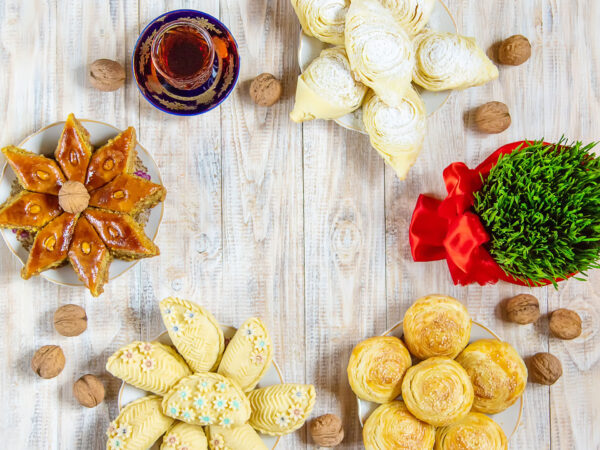
Related Articles

The Persian New Year is a 13-day celebration that occurs during the month of March. This holiday, which is rooted in Zoroastrianism – an ancient religion that predates Christianity and Islam – has been observed in Iran for over 3,000 years. Due to its Zoroastrian origins, it is celebrated worldwide, spanning Central and Western Asia, the Balkans, as well as the United States, and other parts of the world.
According to Persis Karim, the director of the Center for Iranian Diaspora Studies at San Francisco State University, the Persian New Year is beloved for its elemental and seasonal nature. As it coincides with the arrival of spring, it serves as a literal marking of a new year, differentiating it from other celebrations that occur in the dead of winter. The holiday is a warm welcome to the arrival of the new year, characterized by the renewal and vitality of springtime.
What is Nowruz?
Nowruz, also spelled Norooz or Norouz, signifies the first day of spring, marking the commencement of the Persian New Year and the start of the Iranian calendar. Nowruz translates to “new day” and is celebrated as a joyous occasion.
In 2010, the United Nations officially recognized Nowruz as an international holiday, highlighting its cultural significance and global appeal. According to Persis Karim, the celebration of Nowruz is not limited to a specific religious or ethnic group. It is a joyous occasion that transcends various social barriers, uniting individuals from diverse backgrounds in celebration and merriment.
When Is The Persian New Year?
Nowruz is observed on the vernal equinox, which can take place anywhere from March 19 to 21. In California, this year’s Nowruz festivities will begin on Sunday, March 20, at 8:33 a.m.
However, the preparations and celebrations for Nowruz typically start several days ahead of the actual event.
What Year Is It?
1401.
Iran has been using a solar calendar since the 1920s, except for a few years in the 1970s when it reverted to the Islamic lunar calendar. The Iranian calendar is based on the prophet Muhammad’s pilgrimage to Medina and begins with this event. Beeta Baghoolizadeh, an assistant professor of History and Africana Studies at Bucknell University, shared this information.
In 1925, the current solar calendar was adopted by the Iranian parliament.
Common Greetings During Nowruz
There are various ways to extend New Year’s greetings in Iran. The most commonly used phrase is “Saleh No Mobarak,” which translates to “Happy New Year.”
Another way of expressing good wishes is to say “Har roozetan Nowruz,” which means “May every day of your life be a New Year.”
How To Prepare For The New Year?
As winter frost fades away and blossoms start to bloom, Iranians begin preparing for the upcoming new year by getting their homes in order.
This process is known as khooneh takouni, which translates to “shaking the house.”
In practice, it entails a thorough spring cleaning that leaves no corner untouched, with families getting rid of junk and donating old belongings, including clothes. This helps to create a fresh start for the new year.
Additionally, people often purchase new clothing in preparation for the new year. Persis Karim explains that these preparations also include cleaning and tidying up the house, as well as making the Haft-Sin, a traditional table setting for the new year.
The Haft-Sin
Once the spring cleaning is complete, the main dining table is set up at home for the Haft-Sin. This arrangement comprises of seven items that each symbolize various hopes for the upcoming year, with each item beginning with the Farsi letter Sin, or س.
The seven traditional items include Sabzeh, barely, wheat or lentil sprouts, for rebirth and renewal, Samanoo (sweet pudding) for wealth and fertility, Sib (apples) for beauty and nutrit
ion, Seer (garlic) for medicine, Sumac (a spice made from red berries) for the color of the sunrise, Serkeh (vinegar) for age, wisdom, and patience, and Senjed (dried fruit) for love.
Many families also add other sentimental and meaningful items to their Haft-Sin tables, such as a mirror to symbolize reflection, candles for light, coins for prosperity, and hyacinths for beauty and fragrance. Some familie
s even place live goldfish on display to represent new life.
It’s also common for families to include a “book of wisdom” on the table, which may be the Koran, the Shahnameh (a long poem that is the national epic of Greater Iran), or a book of poetry by Hafiz, a beloved Iranian poet. Opening the book of poetry by Hafiz and reading the poem that it lands on is believed to reveal one’s fortune for the upcoming year.
“Even after all this time, the sun never says to the Earth, ‘You owe me.'”
Look what happens with a love like that.
It lights the whole sky.”
— Hafiz
Chaharshanbe Suri – What Is It?
On the last Tuesday before Nowruz, people celebrate Chaharshanbe Suri by coming together, building bonfires, and jumping over the blazes while chanting “Zardi-ye man az toh, sorkhi-ye toh az man!” This phrase translates to “Give me your beautiful red color, and take back my sickly pallor.”
This tradition aligns with the theme of Nowruz: renewal. It represents starting fresh by wiping the slate of the past year clean.
The act of connecting with light and fire is particularly intriguing because, during the winter solstice, Iranians welcome the darkness by lighting candles. However, in the spring holiday, Iranians welcome the light and ask it to take away their darkness, sickly pallor, and winter heaviness.
This year, Chaharshanbe Suri will be celebrated on March 15.
What Is Sizdah-Bedar?
After the clock strikes 8:33 a.m. in California, Nowruz kicks off, and Iranian
s start a 13-day celebration that involves visiting family and friends to pay their respects. This could be overwhelming for children who may tire of yet another Persian party, but they are often given cash gifts by their elders at these gatherings, making it a worthwhile trade-off.
On the 13th day, the Nowruz celebrations come to an end with one final picnic in the park, known as Sizdah-Bedar.
“People go to orchards and open spaces,” said Nazy Kaviani, the executive director of Diaspora Arts Connection, a non-profit organization that organizes cultural and artist events in the Bay Area.
It is customary for Iranians to take the Sabzeh from their Haft-Sin table to Sizdah-Bedar to throw into a river or another body of water.
“You take the long needles of the grass – they have been growing for almost a month, so they’re really long – make a wish and tie a knot. Then you throw it in the water,” Kaviani said. “The water will make the knots open. When the knots open, your wish will come true.”
The Culinary Highlights Of The Persian New Year, Nowruz
Once again, the theme of renewal that is heavily associated with Nowruz is reflected in its culinary highlights.
On Chaharshanbe Suri, Iranians indulge in ash reshteh, a vegetable and noodle soup made with red kidney beans, chickpeas, lentils, parsley, cilantro, spinach, and scallion. Reshteh polo, a rice dish with thin noodles, is also a popular choice. The rice is mixed with an assortment of golden raisins, black raisins, and dates. The noodles in both dishes are significant as eating them is believed to bring you one step closer to achieving your goals for the new year, according to Kaviani.
On Nowruz, Iranians typically have sabzi polo (herbed rice) with ba mahi (fish
). The herbs used in the rice (and in the ash reshteh for Chaharshanbe Suri) symbolize rebirth, while the fish symbolizes life. The herbs used in the rice usually include dill, chives or scallions, parsley, and coriander, though the exact herbs used may vary depending on what is available. The fish also varies, with tilapia and salmon being popular choices.
Kuku sabzi is often served as a side dish for the Nowruz dinner. Like the other dishes, it is heavily herbed, with the herbs used including dill, parsley, chives, and cilantro. Egg frittata is another popular vegetarian dish that features heavily in Iranian cuisine.
On Sizdah-Bedar, the culinary preparations may seem simpler, but they do not disappoint in taste and presentation. Chicken and koobideh (ground beef) kabobs are easy to eat at a picnic, especially when paired with some lavash bread. Salad Olivieh, a chicken, potato, and egg salad, is another popular option.
Throughout March, Iranians also enjoy ajil and shirini. Ajil is a mix of dried nuts and fruits that can be found in almost any Iranian household. Shirini is an assortment of cookies and sweets, with shirini literally translating to “sweets” in English. One popular cookie for Nowruz is Nan-e Berenji, a delicate cookie that is flavored with rosewater and cardamom. You’ll find a recipe for this gluten-free treat below.
Enjoy and Saleh No Mobarak!
Nan-e Berenji Recipe
Ingredients:
⅔ cup confectioners’ sugar
½ cup (1 stick) unsalted butter at room temperature
2 large egg yolks
2 tsp rosewater
1 tsp ground cardamom
2 cups rice flour, plus more if needed (See Cook’s Notes)
Black Sesame seeds or blue poppy seeds optional
Directions:
- Beat the confectioners’ sugar and butter in a large bowl with an electric mixer until creamy. Add the yolks and beat until creamy and smooth, about 1 minute. Add the rosewater and cardamom and mix until combined, about 1 minute.
- Add rice flour and stir using a rubber spatula until you have a soft dough that’s still a bit moist, about 3 minutes. If needed, add more rice flour, 1 tbsp. at a time. Transfer the dough to a clean bowl, cover tightly with plastic wrap, and refrigerate until firm, 4 to 6 hours.
- Preheat the oven to 325 degrees Fahrenheit and line a baking sheet with parchment paper.
- Scoop ½ tbsp. of the dough and roll it into a ball. Place the ball on the prepared baking sheet and gently press it into a ½-inch thick disc. Repeat with the remaining dough, spacing the discs 2 inches apart. Using the edge of the small spoon, gently make a series of curved indentations on top of each disc, radiating out from the center. Sprinkle with sesame seeds (optional).
- Bake until the edges start to lightly brown, 8 to 10 minutes, then transfer the cookies to a wire rack to cool completely. To store cookies, place into an airtight container and refrigerate them for up to 4 days.
Notes From The Cook:
To measure flour accurately, use a dry measuring cup and spoon the flour into it, leveling off the excess. Avoid scooping directly from the bag, as it can compress the flour and lead to dry baked goods.


